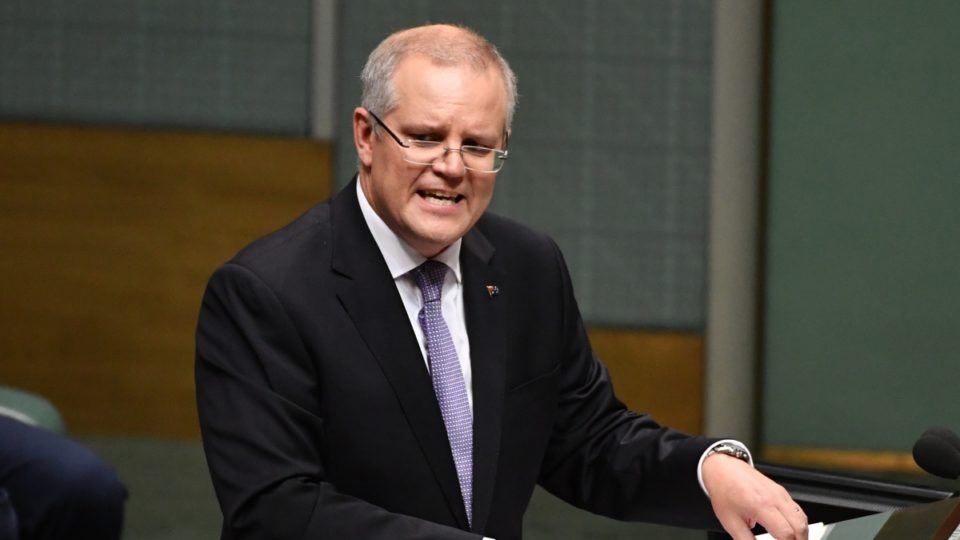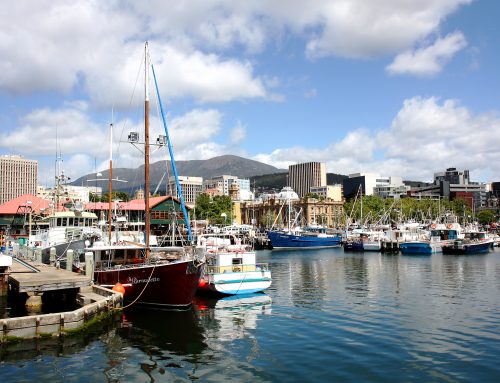Scott Morrison sounded positive about his second Budget, promising “better days ahead” as he delivered it last week. But what will it actually mean for you as you go about your daily life? Here we provide the ultimate Australian budget breakdown so you can decide for yourself whether you share the Treasurer’s optimism.
For first-home buyers
It’s good news if you’re saving up for a deposit on your first home.
One of the first rules of superannuation is “no withdrawals until you retire”, but that’s about to change. As of July 1, young savers will be able to salary sacrifice up to $30,000 of pre-tax income (up to $15,000 per year) to later withdraw as a deposit for a home.
Think of it as a kind of super-charged savings account; the Treasurer says the scheme will boost savings by 30% or more when compared with a standard deposit savings account.
You won’t be able to withdraw this money until July 1, 2018, but if you’re planning to buy a house after then it’s a great opportunity to get your money working harder for you.
For baby boomers with massive homes
The government wants empty nesters to make way for “younger, growing families”. People aged 65 or over who have owned their primary residence for at least 10 years will be allowed to make a non-concessional superannuation contribution of up to $300,000 if they sell it.
Dubbed the “downsizer” contribution, this scheme is aimed at freeing up larger homes for the families who really need them.
Both members of a couple will be able to benefit from this additional contribution on top of their normal caps, and will be exempt from the usual tests for non-concessional contributions.
For property investors
The Government is clamping down on misuse of negative gearing concessions. Too many people have been claiming for private travel expenses, so this tax deduction is being scrapped.
There will also be tighter rules when it comes to depreciation deductions for plant and equipment items like washing machines and ceiling fans. Previously, investors could claim depreciation on items purchased by past owners, but with immediate effect you can only claim this deduction on items you purchased yourself.
For foreign investors
Foreigners investing in Australian property will no longer be allowed to claim primary residence exemption for capital gains tax purposes. This change is expected to save the Government over half a billion dollars over the next four years.
Additionally, foreign investors who leave a property empty for more than six months of the year will be hit with a “ghost tax” of at least $5,000. Scary.
And the Government is putting an end to foreign investors buying up entire apartment blocks: new rules will limit new developments to 50% foreign purchases, so Australian buyers don’t lose out.
For uni students
There’s no way to break this gently… it’s not great news if you’re currently at uni or are planning to attend soon.
Starting in 2018 a 7.5% increase in tuition fees is being phased in. Over the following four years the cost of a government-subsidised degree could jump by as much as $3,600, to a maximum of $50,000. For a subsidised six-year medical degree you’re looking at up to $75,000.
On top of that, you’ll have to start repaying your student loan once you’re earning $42,000 (that’s down from $51,957). If you’re earning over $119,882 you’ll have to pay 10% of your income – up from the previous rate of 8%.
And because repayment thresholds will now be indexed to the consumer price index (instead of the average weekly wages, which rises faster), you’ll end up paying back more to the Government in interest over the course of your loan.
With all those extra fees you might expect to get a better experience at uni, but don’t count on it. The Government has unveiled plans to cut university funding by $2.8 billion over four years, depending on performance.
For small business owners
Remember the $20,000 instant asset tax write-off which was introduced last year? Well, it’s being extended for another year and the threshold is being increased, so businesses turning over up to $10 million a year can take advantage of it until June 30, 2018.
There’s also up to $300 million going to state and territory governments to help reduce red tape for small business.
For cash-in-hand traders
It’s time to clean up your act and pay tax where it’s due. From 1 July 2018, courier and cleaning contractors will come under the taxable payments reporting system (which already applies in the construction sector). This makes it a legal requirement for businesses to report to the ATO on any payments made to contractors.
Plus, the Government is banning technology that can be used by businesses to falsify sales records so they don’t have to pay tax. All of this should contribute an extra $318 million in tax revenue over the next four years.
For parents
Although the Government had promised to increase the family tax benefit by $20 a fortnight per child, they have now decided against the move. This will shave $2 billion off the Budget over four years, they say.
From July 2018 there will be a new income taper test for families, meaning family tax benefit is reduced by 30 cents for every dollar earned over $94,316. 100,000 families will lose access to family tax benefit completely as a result, however it will save $415.4 million over five years.
The Government is putting money aside for families in other areas, though. $37.3 billion is going towards childcare over the next three years, benefiting around one million Aussie families. There will be a single, means-tested child care subsidy to replace previous childcare benefits and rebates, which could simplify things for some families.
The annual cap on childcare benefits for families earning $185,710 or less has been scrapped, but those who earn more than $185,710 will face a cap of $10,000 for childcare rebates.
If you have pre-school aged children, you’ll keep your 15 hours a week of guaranteed free access.
Wealthy families earning over $350,000 a year will no longer have access to childcare subsidies – a move which will trim $119 million off the Budget over the next three years.
For parents of school-aged kids
There’s an extra $19 billion going into school funding over the next 10 years, but how much your school benefits will depend on how well it’s doing for itself. While nearly 10,000 schools will see a growth in funding, 24 of the wealthiest schools will see “negative growth” (read: funding cuts) and a further 350 will see a slowdown in funding growth.
The Government has pledged an increase in funding from $17.5 billion this year to $22.1 billion by 2021, rising to $30.6 billion by 2027.
For people on welfare
If you’re fed up with the red tape involved with dealing with Centrelink, you’ll be pleased to hear the Budget includes $5.5 million of spending on measures to improve processes internally and make life easier for those using the system.
You might see a drop in call waiting times, too, since there will be an extra 250 workers at the agency’s call centre.
The Government is also cracking down on those taking advantage of the system, so expect a tougher grilling if you are collecting payments.
New rules expected to cut costs by $632 million over five years include penalties for people who miss appointments because of intoxication.
And drug users and alcoholics will no longer be eligible for disability pensions if their medical condition is “caused solely by their own substance abuse”.
New drug tests will be trialled, affecting 5000 new welfare recipients. And Centrelink is on the lookout for families that fraudulently collect multiple single-parent payments, so you might have to do more to prove you have a genuine claim.
For fans of public transport
The Government is still gunning for fast rail, with $20 million in 2017-18 going towards the development of business cases for projects that focus on connecting major cities and regional centres, faster.
The Government has pledged $600 million over two years starting in 2019-20 to improve connections between cities and regions as part of a $10 billion National Rail Program. There’s also an extra $500 million going towards regional rail in Victoria.
And users of the Hornsby-Wyong train route may soon benefit from the $12 million of funding being used to establish mobile and internet connectivity.
For those who need medical care
The Medicare rebate freeze is going to be gradually lifted, beginning this July with incentives for doctors to bulk bill.
For specialist consultations the freeze will be lifted next year, then it’s specialist procedures the year after, and in 2020 it’ll be advanced procedures such as radiation. Not really the kind of thing you can wait around three years for though, eh?
In a bid to save taxpayers $1.8 billion, doctors are being encouraged to prescribe more generic brands of medicine. This could mean a bit more cash spare after you’ve picked up your prescription.
For pensioners
It’s generally good news for Australia’s seniors. Any who lost their pensioner concession card after the change in the assets test earlier this year will have it restored and will again be able to access state- and territory-based concessions.
There’s extra help coming for up to 3.5 million people on the age and disability support pensions and parenting payment – one-off cash payments of $75 for singles and $125 for couples to help cover winter energy bills.
And home support services for the elderly will receive an extra $5.5 billion of funding to help deal with the nation’s ageing population.
On the downside, residency requirements are tightening up; you’re now required to have 15 years of continuous Australian residence in order to be eligible for payments.
For people affected by mental health problems
More help is on the way – the Government has committed $165 million towards mental health support and prevention. This includes $80 million for community psychosocial services, over $50 million of support for veterans, and $15 million towards research initiatives.
For people with disabilities
An increase to the Medicare levy shows the Government’s commitment to fully fund its contribution to the National Disability Insurance Scheme (NDIS).
With the NDIS national rollout on track for 2020, Australians with a permanent and significant disability – and their families and carers – will have greater peace of mind.
More than $200 million has been set aside to launch an independent NDIS Quality and Safeguards Commission, responsible for monitoring the quality and safety of services and handling complaints.
$24 million of Budget funding will be used to overhaul the Disability Employment Services program over the course of four years, with the aim of making it easier for participants to choose and change providers.
For veterans
The Department of Veterans’ Affairs will receive $13.5 million in funding to help speed up claims for compensation, rehabilitation and income support.
There will also be a $33.5 million expansion of mental health services for current and former defence members, and almost $10 million going towards suicide prevention efforts.
Other funding in this area will help veterans find work as well as providing better access to counselling services for families.
And that’s about it for this year. If you’re really into this stuff and want to read the Budget in nitty-gritty detail, it’s right here.
As always, we’re here to help you get your finances sorted. It may be that you’re worried about how the changes will affect you and your investments, or you want to know how to take advantage of new opportunities that have just opened up. Either way, you can get in touch with us here.











